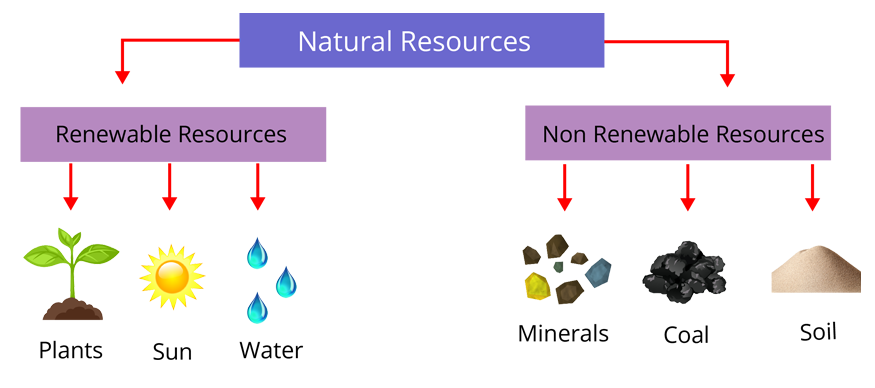JSS 1: Renewable and non-renewable energy
Natural Resources:
Natural resources are resources that occur on Earth and are formed through natural processes without human intervention. Humans require many useful things available in nature to live on this planet. Examples of natural resources are air, water, wood, animals, and minerals. When humans use natural things to make a new thing that increases its value, it is known as a man-made resource.
Types of Natural Resources
There are two types of energy resources:
1. Renewable energy resource
2. Non-renewable energy resources

Renewable resources
Renewable resources are those that cannot be depleted. They are always available and can be reused. Examples of renewable energy resources: Sun, Wind, Water, Soil and Biogas
Non-renewable Resource
They are natural resources that are limited in quantity. These resources cannot be supplied or regenerated in a short duration of time. These resources cannot be reused.
Examples of non-renewable resources are: fossil fuel, coal, natural gas, petroleum, nuclear energy
Differences between the renewable and non-renewable resources
Renewable Resources | Non-renewable Resources |
1. Can be replaced by natural processes in a short duration of time or can be recycled. | 1. These are natural resources that either can not be replaced or may take millions of years to be replaced by natural processes like coal and oil. |
2. It can be reused or recycled and used multiple times. | 2. It cannot be reused or recycled. |
3. Some examples are wind energy, solar power, hydroelectricity, and geothermal. | 3. Some of the examples are petrol, coal, Natural gas, nuclear energy, and fossil fuels. |
4. There is no harm to the environment by using renewable resources. | 4. Huge harm done to the environment because of the harmful emissions. |



Comments
Post a Comment